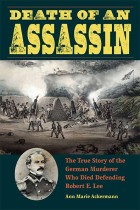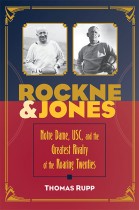Penitentiaries, Punishment, and Military Prisons
Angela M. Zombek | Filed under: Award Winners, Civil War Era, Justice Studies, U.S. History, Understanding Civil War History
Penitentiaries, Punishment, and Military Prisons confronts the enduring claim that Civil War military prisons represented an apocalyptic and ahistorical rupture in America’s otherwise linear and progressive carceral history. Instead, it places the war years in the broader context of imprisonment in 19th-century America and contends that officers in charge of military prisons drew on administrative and punitive practices that existed in antebellum and wartime civilian penitentiaries to manage the war’s crisis of imprisonment. Union and Confederate officials outlined rules for military prisons, instituted punishments, implemented prison labor, and organized prisoners of war, both civilian and military, in much the same way as peacetime penitentiary officials had done, leading journalists to refer to many military prisons as “penitentiaries.”










